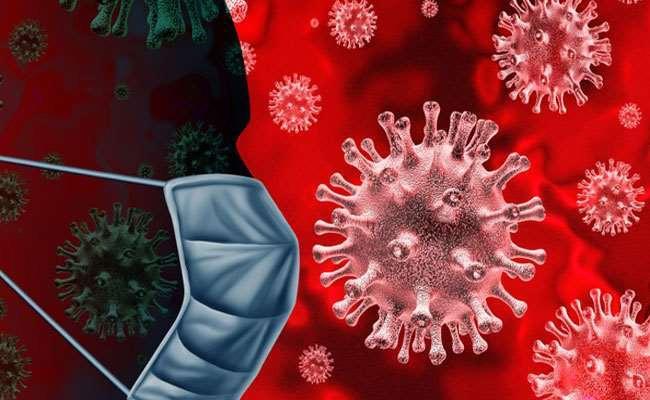
We live in an age in which intersecting crises are being lifted to a global scale, with unseen levels of inequality, environmental degradation and climate destabilization, as well as new surges in populism, conflict, economic uncertainty, and mounting public health threats. All are crises that are slowly tipping the balance, questioning our business as usual economic model of the past decades, and requiring us to rethink our next steps.
In the coming decades, ecological degradation, rising temperatures, and extreme weather events could intensify the threats to human health posed by viruses. There are, to a certain degree, parallels that can be drawn between the current COVID-19 pandemic and some of the other contemporary crises our world is facing.
All require a global-to-local response and long-term thinking; all need to be guided by science and need to protect the most vulnerable among us; and all require the political will to make fundamental changes when faced with existential risks.
In this sense, the 2020 coronavirus pandemic may lead to a deeper understanding of the ties that bind us all on a global scale and could help us get to grips with the largest public health threat of the century, the climate Change.
Many of the root causes of climate change also increase the risk of pandemics. Deforestation, which occurs mostly for agricultural and industrial purposes, is the largest cause of habitat loss worldwide. Loss of habitat forces animals to migrate and potentially contact other animals or people and share germs. Large livestock farms can also serve as a source for spillover of infections from animals to people. Less demand for animal meat and more sustainable animal husbandry could decrease emerging infectious disease risk and lower greenhouse gas emissions.
We have many reasons to take climate action to improve our health and reducing risks for infectious disease emergence is one of them. change is impacting human lives and health in a variety of ways. It threatens the essential ingredients of good health, clean air, safe drinking water, nutritious food supply, and safe shelter and has the potential to undermine decades of progress in global health.
Between 2030 and 2050, climate change is expected to cause approximately 250 000 additional deaths per year, from malnutrition, malaria, diarrhea and heat stress alone.
The direct damage costs to health is estimated to be between USD 2-4 billion per year by 2030.Areas with weak health infrastructure mostly in developing countries will be the least able to cope without assistance to prepare and respond.
WHO supports countries in building climate-resilient health systems and tracking national progress in protecting health from climate change.is the same human activities that are destabilizing the Earth’s climate also contribute directly to poor health?
For example, the main driver of climate change, fossil fuel combustion, also contributes about 2/3 of human exposure to outdoor air pollution, which causes over 4 million deaths a year. Including indoor air pollution brings the total to over 7 million deaths worldwide every year about 1 in every 8 deaths.
The overall cost to human wellbeing, and to economies, is enormous. Air pollution alone costs an estimated US$ 5.11 trillion in welfare losses globally each year. In the 15 countries with the highest greenhouse gas emissions, the health impacts of air pollution are estimated to cost more than 4% of their GDP. Public concern over the health impacts of air pollution is an increasing driver of social movements for action on climate change and overall environmental protection. Meeting the Paris goals would result in health gains which are twice as large as the costs of the mitigation measures from improved air quality alone.
The health gains of climate action go well beyond air quality. They range from more sustainable diets and food systems addressing the rising burden of disease associated with overweight and obesity, to urban transport systems that facilitate walking and cycling, and bringing health gains from increased physical activity.
Weighing in both the impacts of health-damaging business-as-usual policies and the massive health co-benefits of ambitious climate policy, drives climate policies that are more ambitious and health-promoting. Though here is one thing, however, that almost all health shocks have in common: they hit the poorest and the most vulnerable the hardest. They act as poverty multipliers, forcing families into extreme poverty because they have to pay for health care.
At least half of the world’s population does not enjoy full coverage for the most basic health services. When health disasters hit and in a business as usual scenario they will do so increasingly global inequality is sustained and reinforced, and paid for with the lives of the poor and marginalized.
A first lesson we are drawing from the COVID-19 pandemic and how it relates to environment and climate change is that well-resourced, equitable health systems with a strong and supported health workforce are essential to protect us from health security threats, including climate change.
The austerity measures that have strained many national health systems over the past decade will have to be reversed if economies and societies are to be resilient and prosperous in an age of change.
Secondly, the ongoing pandemic illustrates how inequality is a major barrier in ensuring the health and wellbeing of people, and how social and economic inequality materializes in unequal access to healthcare systems.
For example, the health threat of the novel coronavirus is, on average, greater for cities and people exposed to higher levels of pollution, which are most often people living in poorer areas. The same is true for the health impacts of climate change, with one of its major causes, the burning of fossil fuels, also adding pollution to the air and disproportionately impacting the health of those in poverty.
The WHO estimates that by reducing the environmental and social risk factors people are exposed to, nearly a quarter of the global health burden (measured as loss from sickness, death and financial costs) could be prevented.
Creating healthy environments for healthier populations and promoting Universal Health Coverage (UHC) are two of the most effective ways in which we can reduce the long-term health impacts from and increase our resilience and adaptive capacity to both the coronavirus pandemic and climate change.
Third, the global health crisis we find ourselves in has forced us to dramatically change our behavior in order to protect ourselves and those around us, to a degree most of us have never experienced before. This temporary shift of gears could lead to a long-term shift in old behaviors and assumptions, which could lead to a public drive for collective action and effective risk management.
Even though climate change presents a slower, more long-term health threat, an equally dramatic and sustained shift in behavior will be needed to prevent irreversible damage.
Lastly, crises like these offer an opportunity for a regained sense of shared humanity, in which people realize what matters most: the health and safety of their loved ones, and by extension the health and safety of their community, country and fellow global citizens.
Both the climate crisis and unfolding pandemic threaten this one thing we all care about. Nonetheless, there are lessons to be learned about how future changes in human activity driven by climate change might increase the likelihood of viruses jumping from wild species into our own.
By Dr. Ramamohana Reddy Appannagari, Environmental Ecologist Researcher, works at CHEMTEX Environmental Laboratory, Texas, USA.
Recent Random Post:















